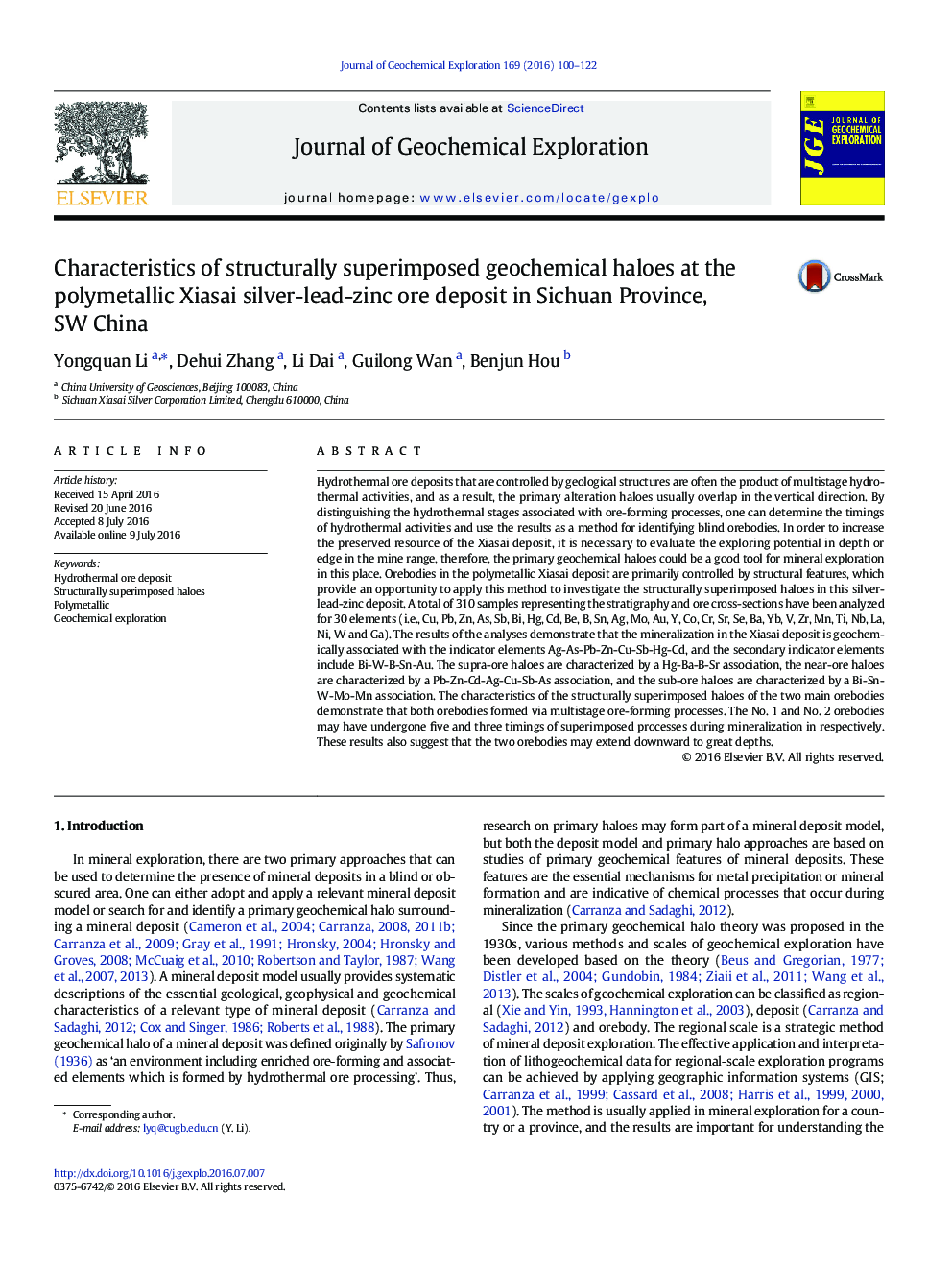| کد مقاله | کد نشریه | سال انتشار | مقاله انگلیسی | نسخه تمام متن |
|---|---|---|---|---|
| 4456906 | 1620890 | 2016 | 23 صفحه PDF | دانلود رایگان |

• Ore-body scale geochemical exploration method is applied in Ag-Pb-Zn deposit.
• Main indicator elements are: Ag, Pb, Zn, Cu, Sb, Hg, Cd and As.
• No. 1 and No. 2 orebodies may be superimposed 5 and 3 times respectively.
• Results indicate a good potential for prospecting orebodies at greater depths.
Hydrothermal ore deposits that are controlled by geological structures are often the product of multistage hydrothermal activities, and as a result, the primary alteration haloes usually overlap in the vertical direction. By distinguishing the hydrothermal stages associated with ore-forming processes, one can determine the timings of hydrothermal activities and use the results as a method for identifying blind orebodies. In order to increase the preserved resource of the Xiasai deposit, it is necessary to evaluate the exploring potential in depth or edge in the mine range, therefore, the primary geochemical haloes could be a good tool for mineral exploration in this place. Orebodies in the polymetallic Xiasai deposit are primarily controlled by structural features, which provide an opportunity to apply this method to investigate the structurally superimposed haloes in this silver-lead-zinc deposit. A total of 310 samples representing the stratigraphy and ore cross-sections have been analyzed for 30 elements (i.e., Cu, Pb, Zn, As, Sb, Bi, Hg, Cd, Be, B, Sn, Ag, Mo, Au, Y, Co, Cr, Sr, Se, Ba, Yb, V, Zr, Mn, Ti, Nb, La, Ni, W and Ga). The results of the analyses demonstrate that the mineralization in the Xiasai deposit is geochemically associated with the indicator elements Ag-As-Pb-Zn-Cu-Sb-Hg-Cd, and the secondary indicator elements include Bi-W-B-Sn-Au. The supra-ore haloes are characterized by a Hg-Ba-B-Sr association, the near-ore haloes are characterized by a Pb-Zn-Cd-Ag-Cu-Sb-As association, and the sub-ore haloes are characterized by a Bi-Sn-W-Mo-Mn association. The characteristics of the structurally superimposed haloes of the two main orebodies demonstrate that both orebodies formed via multistage ore-forming processes. The No. 1 and No. 2 orebodies may have undergone five and three timings of superimposed processes during mineralization in respectively. These results also suggest that the two orebodies may extend downward to great depths.
Journal: Journal of Geochemical Exploration - Volume 169, October 2016, Pages 100–122